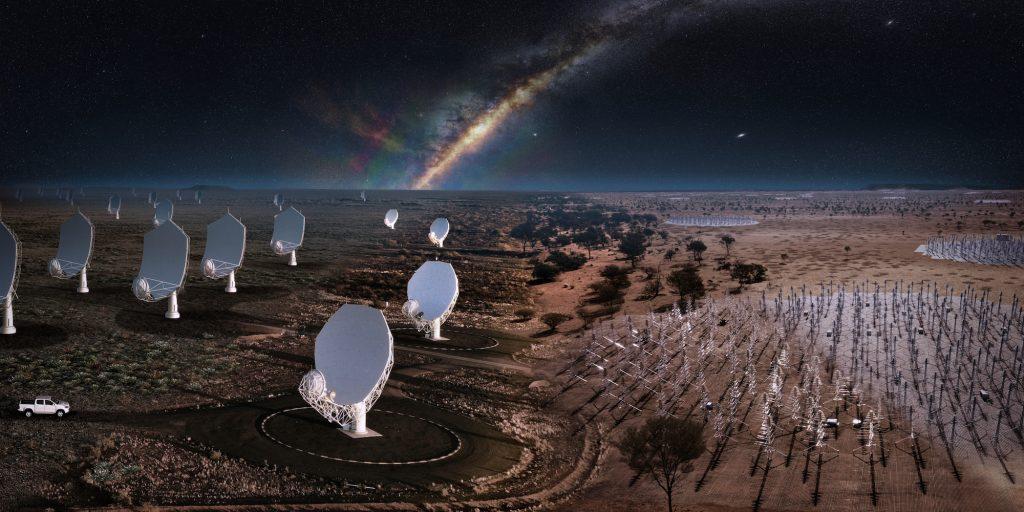Square Kilometer Array Project
About SKA Project
- The Square Kilometre Array (SKA) project is an international effort to build the world’s biggest and most sensitive radio telescope, with eventually over a square kilometre (one million square metres) of collecting area.
- SKA will be a group of radio telescopes operating out of South Africa and Australia in two different ranges of radio frequency. Its headquarters are at the Jodrell Bank Observatory in the UK.
- The South-African array will scan for mid-frequency signals, between 350 MHz and 15.4 GHz, while the Australian telescope will work in the low-frequency range of 50-350 MHz.
- To improve the accuracy of triangulation of data and its resolution, the project will include additional dishes in the future in neighbouring African countries — Botswana, Ghana, Kenya, Madagascar, Mauritius, Mozambique, Namibia, and Zambia.
- Once operational, SKA would be between 5 to 60 times more powerful than the most advanced existing radio telescopes functioning in comparable frequency ranges.
- It will also be one of the world’s largest collaborative research projects, involving thousands of researchers and the world’s fastest supercomputers. It is expected to begin operations by 2029.
Objectives
- The project aims to answer a wide variety of long-standing questions in physics and cosmology, by observing the universe.
- It will study the Milky Way in great detail.
- The telescope will study magnetism and radiation from distant galaxies and map them as well. This will provide details about galaxy formation and evolution.
- It will also study the ‘Dark Ages’ of the universe and what happened within a few million years following the Big Bang before there was any light, of which we do not know much.
- Through these observations, the SKA will also aim to detect and understand the role of dark matter and dark energy in the universe.
- Finally, it will aid in the search for life beyond the Earth by looking for planets that orbit stars in habitable zones and studying their atmosphere for organic compounds, as a part of a science programme called Cradle of Life.

Who is involved in the SKA Project?
- Founded in 2019, the Square Kilometre Array Observatory (SKAO) has 16 consortium members — Australia, South Africa, Canada, China, India, Japan, South Korea, the UK, Spain, Portugal, Switzerland, France, Germany, the Netherlands, Sweden, and Italy.
Why in News?
- The Government of India has accorded its approval for India’s participation in the Square Kilometer Array (SKA), at an estimated cost of ₹1250 Cr.
- This approval covers funding support for the construction phase of the international SKA Observatory (SKAO) spread over the next 7 years.
- The project will be jointly funded by the Department of Atomic Energy (DAE) and Department of Science and Technology (DST), with DAE as the lead agency.
- Subsequent to this approval, India will be signing the SKA treaty to become a full-fledged member of the SKA Observatory and thus join the growing list of countries participating in the project.
Related Information
What are radio telescopes?
- Radio telescopes detect and amplify radio waves from space, turning them into signals that astronomers use to enhance our understanding of the Universe.
- Unlike optical telescopes, radio telescopes can detect invisible gas and, therefore, they can reveal areas of space that may be obscured by cosmic dust.
Subscribe
Login
0 Comments
